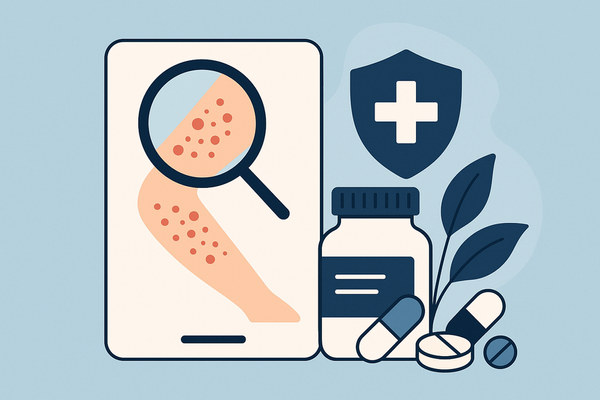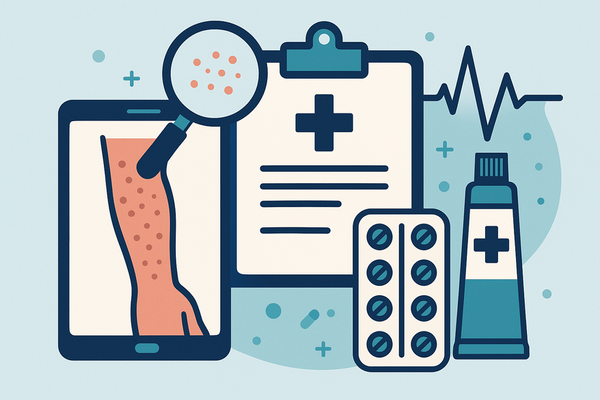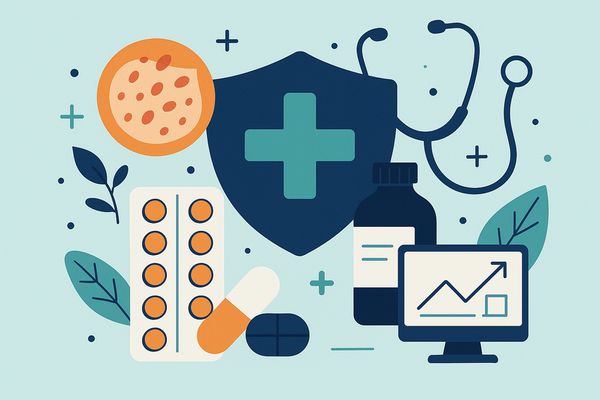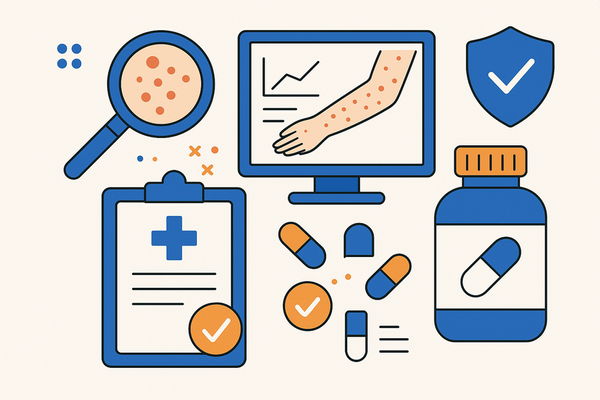Exploring the Latest Rash Detector App Update: Transforming AI Dermatology Tools
Discover the latest rash detector app update with enhanced AI accuracy, a user-friendly interface, expanded condition database, and strong privacy measures.
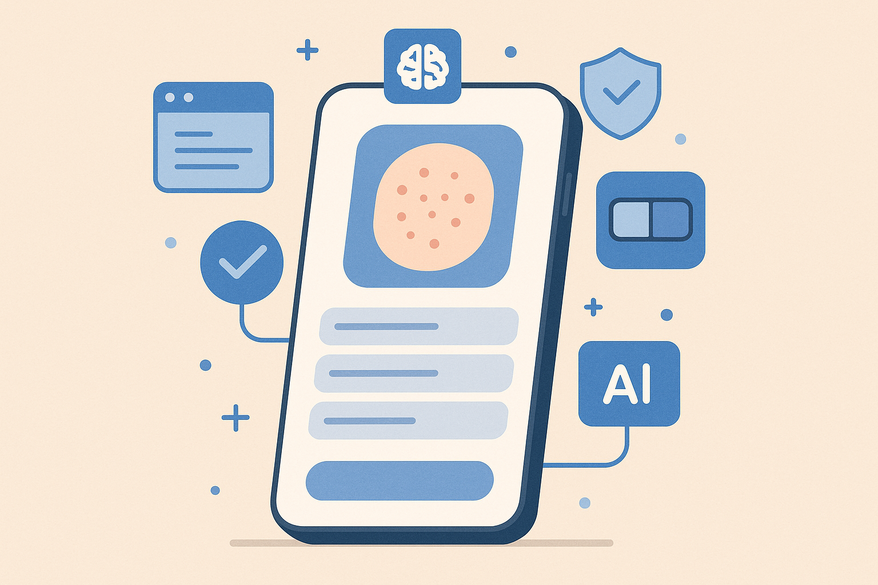
Estimated reading time: 6 minutes
Key Takeaways
- Accuracy boost: New AI model delivers up to 4× higher detection accuracy with 100,000 labeled images.
- Privacy first: All processing is on-device using TensorFlow Lite, ensuring HIPAA/GDPR compliance.
- Expanded coverage: Database now covers 40+ conditions, including rare rashes.
- User-friendly design: Redesigned snap-and-scan workflow, color-coded risk scores, and one-tap sharing.
- Seamless integration: APIs support export to Apple Health, Google Fit, and HL7 FHIR-compatible EHRs.
Table of Contents
- Introduction
- Background Context
- Detailed Analysis
- Improved Detection Accuracy
- Enhanced User Interface
- Additional Condition Identification
- Intelligent Conversational AI
- Technological Improvements
- User Impact and Benefits
- Expert Opinions and Industry Perspectives
- Future Outlook and Potential Developments
- Rash Detector Integration
- Conclusion
- Call to Action
- FAQ
Introduction
The latest rash detector app update brings a suite of AI-powered enhancements that are transforming how users and clinicians approach skin condition detection. Rash detector apps leverage advanced artificial intelligence to analyze photos of the skin for potential conditions within seconds. They provide data-driven insights to help users self-assess issues and support healthcare professionals in making early interventions. As healthcare technology evolves, these tools play a critical role in detecting conditions sooner, guiding treatment, and reducing misdiagnosis. Learn more about how AI diagnoses rashes.
Background Context
Early versions of rash detector apps delivered core features that set the stage for AI-driven dermatology:
- AI chatbots simulating a skin-health interview to narrow down possibilities.
- Local (on-device) photo analysis to keep sensitive data off external servers.
- Symptom tracking modules for duration, appearance, and associated factors.
Why updates matter:
- Medical research evolves rapidly, requiring AI models to retrain on new, validated datasets (see data protection).
- Subtle visual differences in skin conditions demand ongoing refinement of image-recognition algorithms.
- User trust depends on reliable accuracy and up-to-date condition coverage.
Detailed Analysis of the Latest Update
Improved Detection Accuracy
- AI/ML model offers up to 4× higher accuracy versus prior versions.
- Dataset expanded from 10,000 to 100,000 labeled images, including rare conditions.
- Supervised learning and data augmentation refined lesion edge detection and color differentiation.
Enhanced User Interface
- Redesigned “snap-and-scan” workflow with on-screen prompts for optimal lighting and focus.
- Color-coded risk scores and larger thumbnails provide instant visual cues.
- One-tap access to scan history and “share result” buttons streamline communication.
Additional Condition Identification
- Database increased from 25 to 40+ skin issues, covering eczema subtypes, viral exanthems, drug eruptions, and more.
- Dynamic symptom questionnaire mimics a clinician’s decision tree.
Intelligent Conversational AI
- Context-aware chat feature asks follow-up questions like “Have you started a new medication?”
- Refines suggestions and flags red-flag symptoms.
Technological Improvements
- On-device TensorFlow Lite models cut scan time from 5 seconds to under 2 seconds.
- APIs support direct export of scan results to Apple Health, Google Fit, and EHR platforms in HL7 FHIR format.
User Impact and Benefits
- Faster, more accurate self-assessment: Results in under 2 seconds with up to 4× improved diagnostic accuracy.
- Enhanced data privacy: Processing and storage occur entirely on-device.
- Comprehensive symptom tracking: Historical logs exportable as PDF or shareable with clinicians.
- Educational support: In-app resources, tutorial videos, and actionable tips on rash care.
Expert Opinions and Industry Perspectives
Dr. Emily Zhang, board-certified dermatologist, notes: “These apps are invaluable triage tools for patients. They help identify red flags early, but should complement—not replace—clinical evaluations.” Industry analysts praise the balance of privacy, accessibility, and diagnostic power as a model for future digital health tools.
Future Outlook and Potential Developments
- EHR Integration: Planned direct links to Epic and Cerner via HL7 FHIR.
- Continued AI enhancements: Research into unsupervised learning for rare or asymptomatic conditions.
- Teledermatology expansion: Secure in-app video consultations.
- Personalized analytics: Environmental and lifestyle data to customize prevention strategies.
Rash Detector Integration
Tools like Rash Detector harness these AI and privacy enhancements to deliver instant, on-device skin analysis with no cloud upload required.
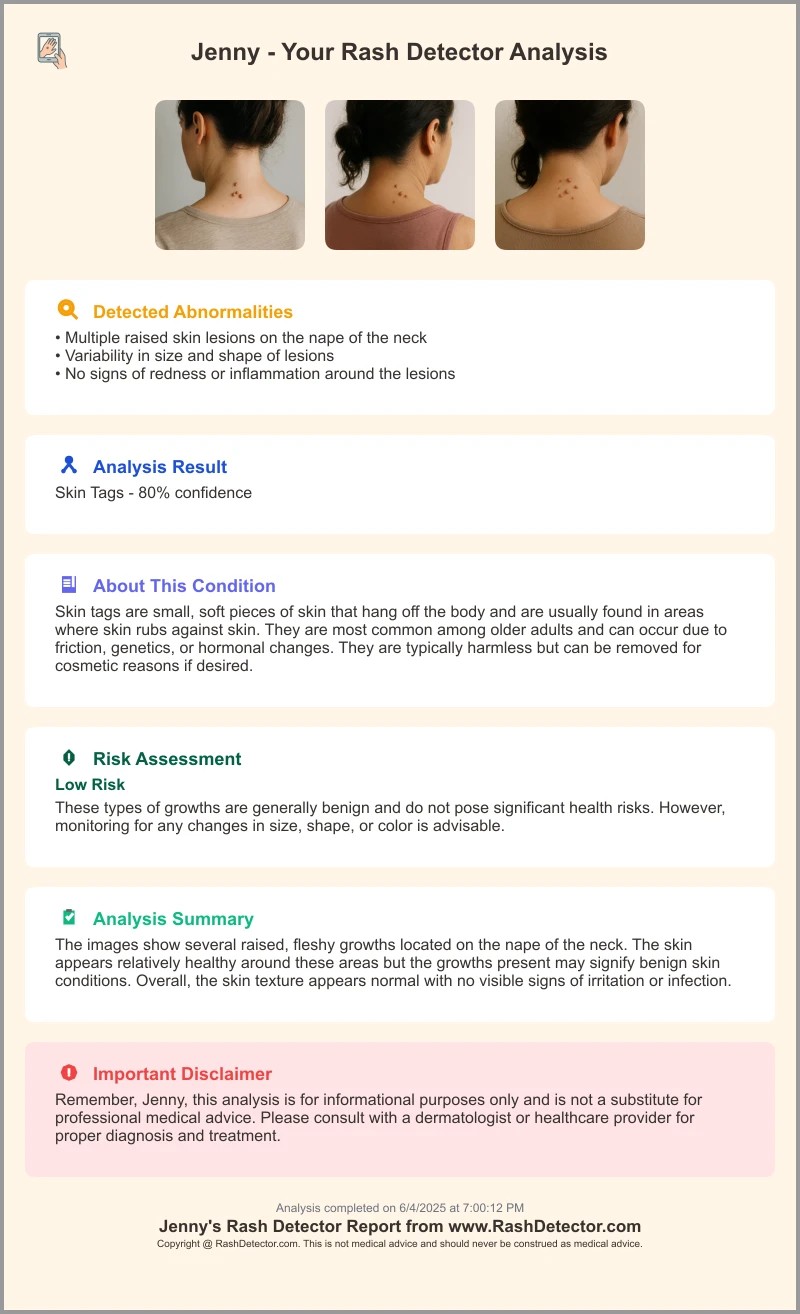
Conclusion
The latest rash detector app update delivers significant strides in detection accuracy, user privacy, interface design, and integration capabilities. By retraining models on larger datasets, refining the user experience, expanding condition coverage, and ensuring all processing stays on-device, these apps are reshaping early skin condition detection and supporting teledermatology best practices.
Call to Action
Update or download the latest version of your preferred rash detector app to experience these AI-driven enhancements firsthand. Subscribe to release notes and dermatology tech blogs to stay informed about future features. For personalized medical advice, always consult a qualified healthcare provider.
FAQ
- Q: How accurate is the updated app?
A: The new AI model achieves up to 4× higher accuracy, thanks to a tenfold increase in labeled training images. - Q: Are my photos secure?
A: Yes. All image analysis and data storage occur entirely on your device, ensuring HIPAA/GDPR compliance. - Q: Which conditions can it detect?
A: The database now covers over 40 skin issues, including eczema, viral exanthems, drug eruptions, and rare rashes. - Q: Can this replace a dermatologist visit?
A: No. It serves as a triage and self-assessment tool but should complement, not replace, professional evaluations.


